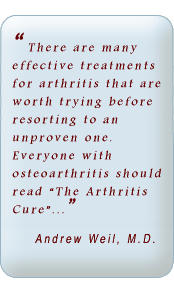Medical Evidence
Stress Fiber Analysis Of Fibroblasts
Grown On Different Proteoglycans Huettinger M Institute
Medical Chemistry, Vienna University, Austria
Objective: Cells building
the body bearing tissue depend heavily on elements that confer
mechanostability. The principle is called tensegrity. The remarkable
feature thereof is that local forces cause the elements involved
in mechanostability to reorient and while loosing flexibility
gain stability. Intracellularly, the molecules involved are actin-filaments
(stress-fibers), microtubule and intermediate filaments. They
contact integrins located in the cell membrane, and so couple
to the extracellular components like fibronectin, collagen and
proteoglycans extending the tensegrity framework over distance.
At this point a rich source of signalling is located, kinases
and signal proteins, tuning production of cytokines and proteinases
that coordinate tissue repair. They all are connected to the integrins
receiving input of the level of mechanical stress.
Methods: We here probed the
influence of proteoglycans (chondroitin sulfate) on actin filaments
of fibroblasts. Confluent cultures, where cell migration is absent
and tissue stability is established, were compared with cultures
where mechanical disruption of the monolayer induced reorientation
of the monolayer, a situation comparable to wound healing.
Results: We demonstrate by
immunofluorescence microscopy that proteoglycans have minor effects
on the formation of stress fibers in confluent undisturbed fibroblast
cultures. There is however a dramatic effect in regenerating fibroblast
monolayers on the coordinated formation of stress fibers. In the
presence of chondroitin-sulfate-proteoglycan (CSPG) compared to
heparan-sulfate-proteoglycan (HSPG) and dermatan-sulfate-proteoglycan
(DSPG) the effect is pronounced. In addition, soluble CSPG was
as effective as CSPG coupled to collagen coated on the culture
dish surface. Different donor sources for the proteoglycans were
studied as well. Conclusion: The data indicates that availability
of CSPG for cells in the process of reconstruction supports the
coordinated assembling of the structures that establish tensegrity
to cells.
Source: EULAR ’98 Symposium-Satellite
IBSA; Satellite Symposium 10 New approaches in OA: chondroitin
sulfate (CS 4&6) not just a symptomatic treatment T.L. Vischer,
B.A. Michel (Chairs) Geneva, Sept. 7th, 1998
Dr. Theo’s Comments: This
study proves that chondroitin sulfate can beneficially modify
cartilage tissue. This is evidence that chondroitin may be structure-modifying
and not just a symptomatic treatment for osteoarthritis.




